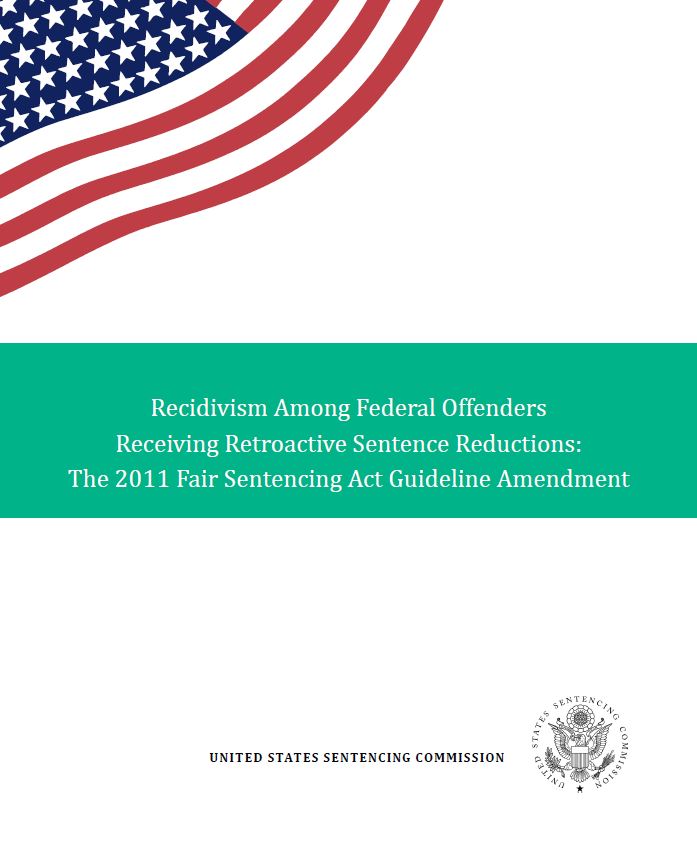Summary
(Published March 28, 2018) The publication Recidivism Among Federal Offenders Receiving Retroactive Sentence Reductions: The 2011 Fair Sentencing Act Guideline Amendment analyzes recidivism among crack cocaine offenders who were released immediately before and after implementation of the 2011 Fair Sentencing Act Guideline Amendment, and followed in the community for three years.
In order to study the impact of retroactive sentence reductions on recidivism rates, staff analyzed the recidivism rate for a group of crack cocaine offenders whose sentences were reduced pursuant to retroactive application of the 2011 Fair Sentencing Act Guideline Amendment. Staff then compared that rate to the recidivism rate for a comparison group of offenders who would have been eligible to seek a reduced sentence under the 2011 amendment, but were released before the effective date of that amendment after serving their full prison terms less good time and other earned credits.
- Other Related Reports:
Key Findings
The Commission's report aims to answer the research question, "Did the reduced sentences for the FSA Retroactivity Group result in increased recidivism?"
Key findings of the Commission’s study are as follows:
- The recidivism rates were virtually identical for offenders who were released early through retroactive application of the FSA Guideline Amendment and offenders who had served their full sentences before the FSA guideline reduction retroactively took effect. Over a three-year period following their release, the “FSA Retroactivity Group” and the “Comparison Group” each had a recidivism rate of 37.9 percent.
- Among offenders who did recidivate, for both groups a “court or supervision violation” was most often the most serious recidivist event reported. Approximately one-third of the offenders who recidivated in both groups (32.9% for the FSA Retroactivity Group and 30.8% for the Comparison Group) had court or supervision violation as their most serious recidivist event.
- Among offenders who did recidivate, the time to recidivism for both groups were nearly identical. The median time to recidivism for offenders who recidivated in both groups was approximately 14½ months.

